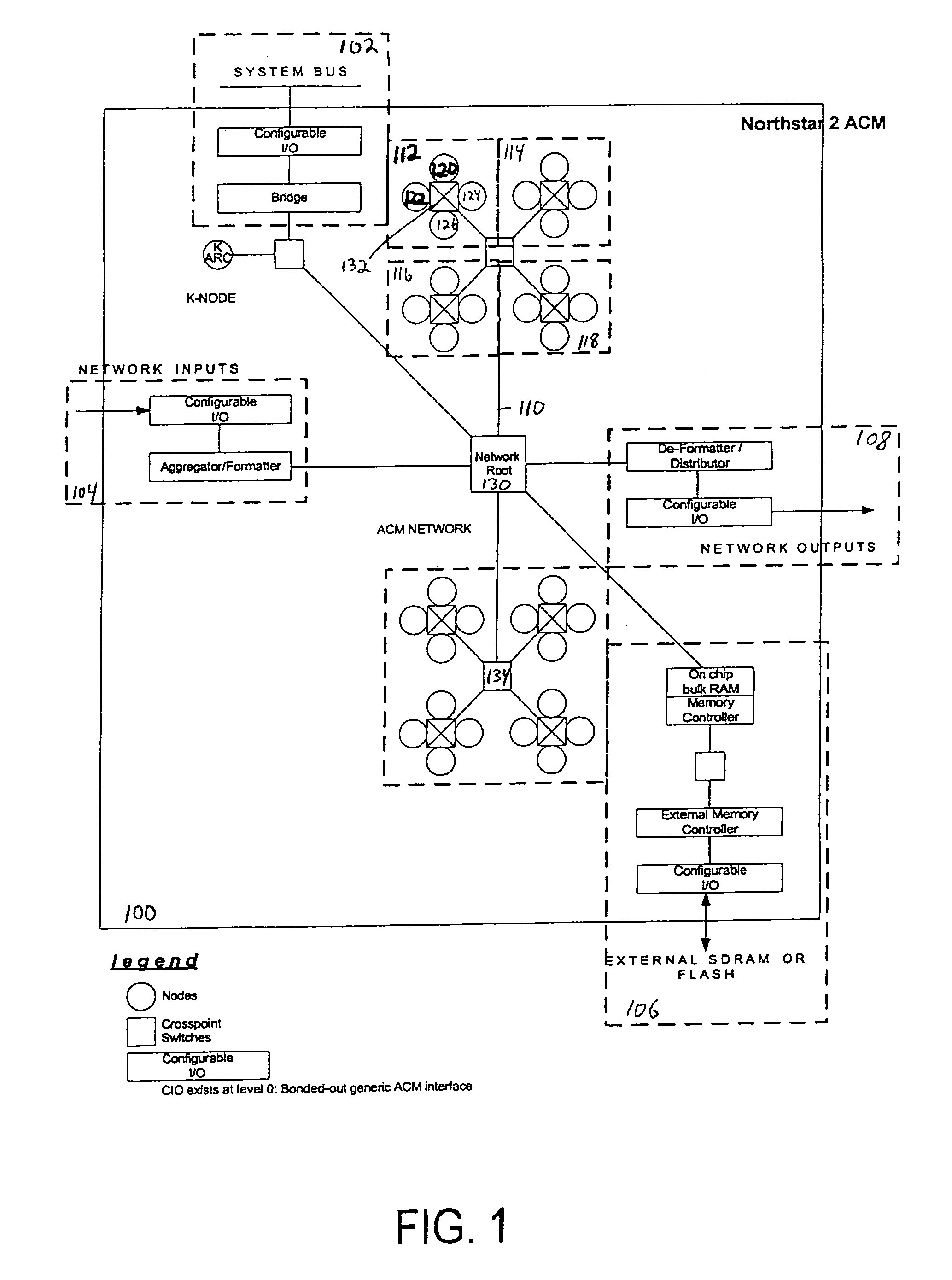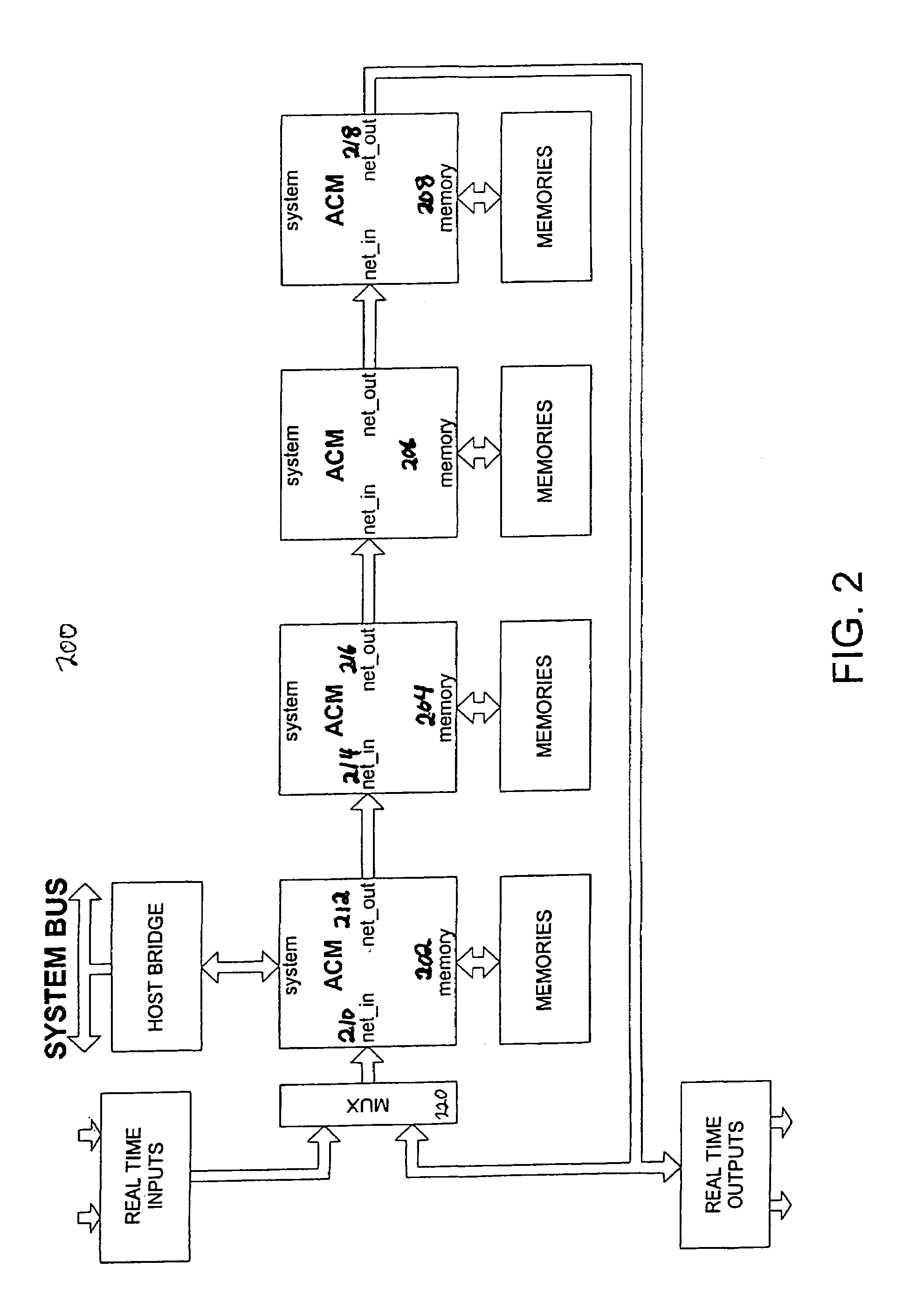Cache for instruction set architecture using indexes to achieve compression
a technology of instruction set and index, applied in the field of digital processing architecture, can solve the problems of consuming significantly more power compared with other types of devices, comparatively small amount of processing resources devoted to actual algorithmic operations, and microprocessors and dsps require significant processing resources
- Summary
- Abstract
- Description
- Claims
- Application Information
AI Technical Summary
Benefits of technology
Problems solved by technology
Method used
Image
Examples
Embodiment Construction
[0033]To address the deficiencies of prior types of information processing devices, an adaptive computing engine (ACE) architecture has been developed that provides the programming flexibility of a microprocessor, the speed and efficiency of an ASIC, and the post-fabrication reconfiguration of an FPGA. The details of this architecture are disclosed in the U.S. patent application Ser. No. 09 / 815,122, entitled “Adaptive Integrated Circuitry with Heterogeneous and Reconfigurable Matrices of Diverse and Adaptive Computational Units having Fixed, Application Specific Computational Elements,” filed on Mar. 22, 2001, and incorporated by reference herein.
[0034]In general, the ACE architecture includes a plurality of heterogeneous computational elements coupled together via a programmable interconnection network. FIG. 1 illustrates an embodiment 100 of an ACE device. In this embodiment, the ACE device is realized on a single integrated circuit. A system bus interface 102 is provided for comm...
PUM
 Login to View More
Login to View More Abstract
Description
Claims
Application Information
 Login to View More
Login to View More - R&D
- Intellectual Property
- Life Sciences
- Materials
- Tech Scout
- Unparalleled Data Quality
- Higher Quality Content
- 60% Fewer Hallucinations
Browse by: Latest US Patents, China's latest patents, Technical Efficacy Thesaurus, Application Domain, Technology Topic, Popular Technical Reports.
© 2025 PatSnap. All rights reserved.Legal|Privacy policy|Modern Slavery Act Transparency Statement|Sitemap|About US| Contact US: help@patsnap.com



